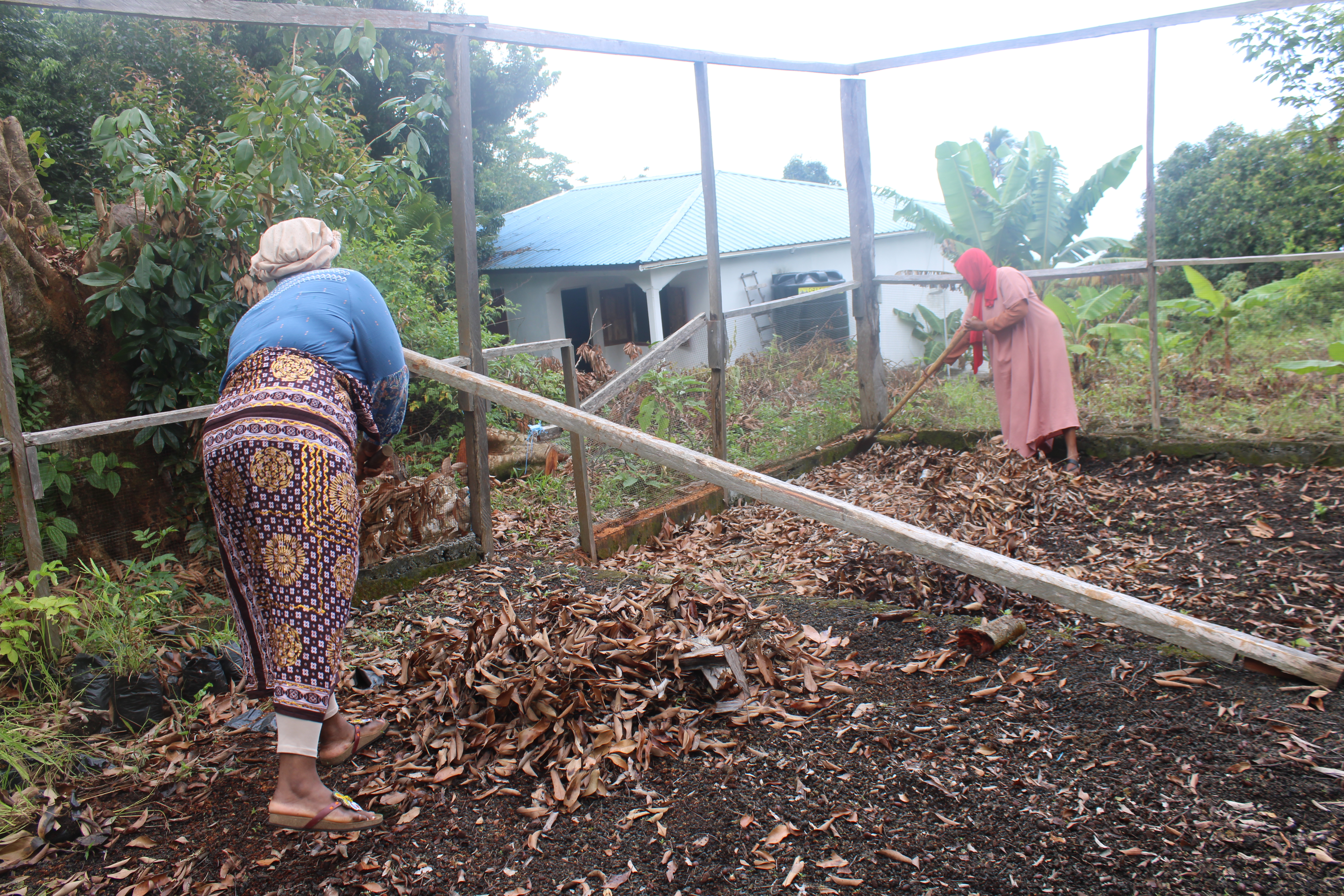

Contexte du projet En Union des Comores, les femmes font parties des groupes les plus impactées par la problématique du changement climatique, ce qui a accentué la précarité de leur conditions de vie. Ainsi Les conditions pédoclimatiques, notamment l'existence des micros climats favorisent la multiplication de nombreuses espèces et variétés fruitières. La production fruitière actuelle reste marginale et se présente le plus souvent sous forme d'arbres éparpillés dans les parcelles agricoles. La production fruitière comorienne, notamment l'orange, le citron, l'avocat, la mandarine et le litchi, présente l'avantage d'être en contre saison de celle des pays tropicaux de l'hémisphère Nord. Elle pourrait donc de ce fait occuper un créneau particulier de production de "contre saison". En outre, le climat tropical humide de l'Union des Comores et ses sols d'origine volcanique permettent de promouvoir l'arboriculture fruitière qui favoriserait également la valorisation des terres telles que les terres caillouteuses (Grande Comores). A ce jour, la production fruitière reste de cueillette; les arbres sont plantés et abandonnés sans aucun entretien. Ces besoins sont identifiés après avoir réalisé des réunions de concertations avec la communauté cible. Vue les conditions climatiques récentes tel que la variation saisonnière et l'insuffisance de certaines différentes variétés fruitiers dans la zone cible, la communauté a choisi de mettre en place la culture des plants fruitiers. Objectif globale du projet L'objectif global de ce projet est de contribuer à l'amélioration des conditions de vie des femmes agricultrices par leur autonomisation et le renforcement de leur résilience face aux changements climatiques. Objectifs spécifiques O1. Renforcer les capacités des femmes sur l'adaptation et l'atténuation des impacts dus aux Changement climatiques. O2. Rendre les femmes agricultrices autonomes par le développement d'une pépinière; la production des plants fruitiers et l'amélioration de leurs revenus. Résultats attendus R1.1 Les femmes agricultrices sont identifiées et regroupées en comité ; R1.2. Les femmes ont acquis des connaissances en matière de changement climatique ; R2.1. Les femmes sont capables de pratiquer l'agriculture durable et résiliente aux changements climatiques ; R2.2. Les plants fruitiers sont disponibles, plantés et suivis dans des champs pilotes des villages cibles pour la plantation dans les champs respectifs.
 Francais
Francais  Anglais
Anglais 